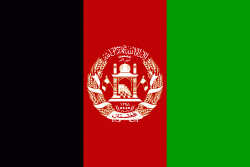Anaba District (‘Unābah)
Anaba or Anabah District is a district of Panjshir Province, Afghanistan. The estimated population in 2019 was 19,978.
On 5 September 2021, Taliban spokesperson Bilal Karimi said that the four districts of Panjshir Province had been captured, including Anabah District.
However, Panjshir Resistance spokesman Ali Maisam Nazary later made unverified claims that 60% of the entire province was still under National Resistance Front control.
On 6 October 2021, the NRF claimed it had stormed the district and liberated it. It claimed to have killed over 50 Taliban and wounded over 20 Taliban fighters.
On 5 September 2021, Taliban spokesperson Bilal Karimi said that the four districts of Panjshir Province had been captured, including Anabah District.
However, Panjshir Resistance spokesman Ali Maisam Nazary later made unverified claims that 60% of the entire province was still under National Resistance Front control.
On 6 October 2021, the NRF claimed it had stormed the district and liberated it. It claimed to have killed over 50 Taliban and wounded over 20 Taliban fighters.
Map - Anaba District (‘Unābah)
Map
Country - Afghanistan
 |
 |
| Flag of Afghanistan | |
Human habitation in Afghanistan dates back to the Middle Paleolithic era, and the country's strategic location along the historic Silk Road has led it to being described, picturesquely, as the ‘roundabout of the ancient world’. Popularly referred to as the graveyard of empires, the land has historically been home to various peoples and has witnessed numerous military campaigns, including those by the Persians, Alexander the Great, the Maurya Empire, Arab Muslims, the Mongols, the British, the Soviet Union, and most recently by a US-led coalition. Afghanistan also served as the source from which the Greco-Bactrians and the Mughals, amongst others, rose to form major empires. The various conquests and periods in both the Iranian and Indian cultural spheres made the area a center for Zoroastrianism, Buddhism, Hinduism, and later Islam throughout history.
Currency / Language
| ISO | Currency | Symbol | Significant figures |
|---|---|---|---|
| AFN | Afghan afghani | Ø‹ | 2 |
| ISO | Language |
|---|---|
| PS | Pashto language |
| FA | Persian language |
| TK | Turkmen language |
| UZ | Uzbek language |















